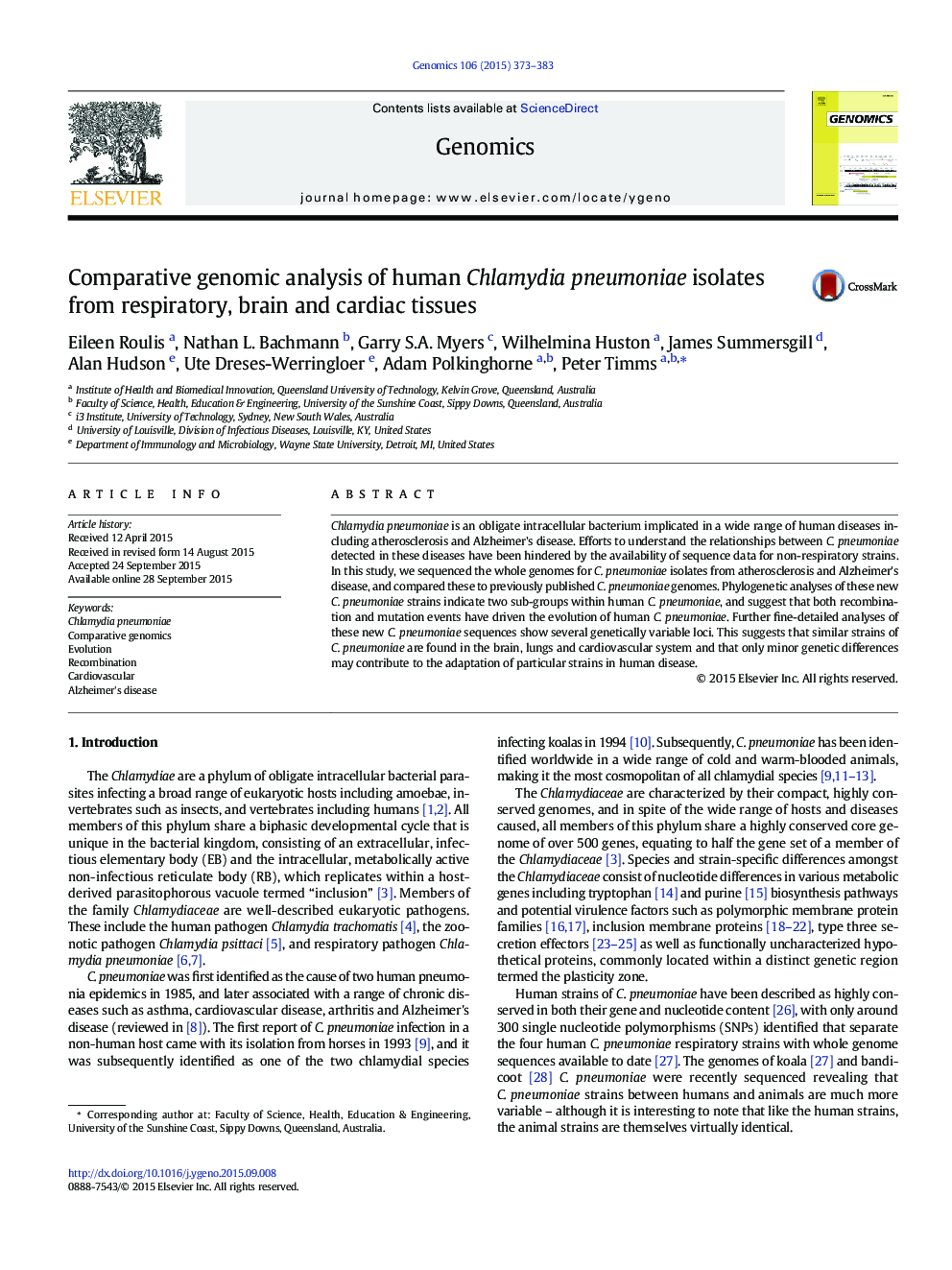| Article ID | Journal | Published Year | Pages | File Type |
|---|---|---|---|---|
| 2820583 | Genomics | 2015 | 11 Pages |
•We compare genome sequences of Chlamydia pneumoniae from respiratory, brain and cardiac tissues.•Phylogenetic analyses suggest two sub-groups within human Chlamydia pneumoniae.•Recombination and mutation events have driven the evolution of human Chlamydia pneumoniae strains.•Several genetically variable regions have been identified.•Minor genetic differences may contribute to adaptation of particular strains to human disease.
Chlamydia pneumoniae is an obligate intracellular bacterium implicated in a wide range of human diseases including atherosclerosis and Alzheimer's disease. Efforts to understand the relationships between C. pneumoniae detected in these diseases have been hindered by the availability of sequence data for non-respiratory strains. In this study, we sequenced the whole genomes for C. pneumoniae isolates from atherosclerosis and Alzheimer's disease, and compared these to previously published C. pneumoniae genomes. Phylogenetic analyses of these new C. pneumoniae strains indicate two sub-groups within human C. pneumoniae, and suggest that both recombination and mutation events have driven the evolution of human C. pneumoniae. Further fine-detailed analyses of these new C. pneumoniae sequences show several genetically variable loci. This suggests that similar strains of C. pneumoniae are found in the brain, lungs and cardiovascular system and that only minor genetic differences may contribute to the adaptation of particular strains in human disease.
